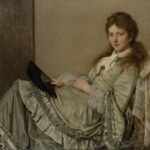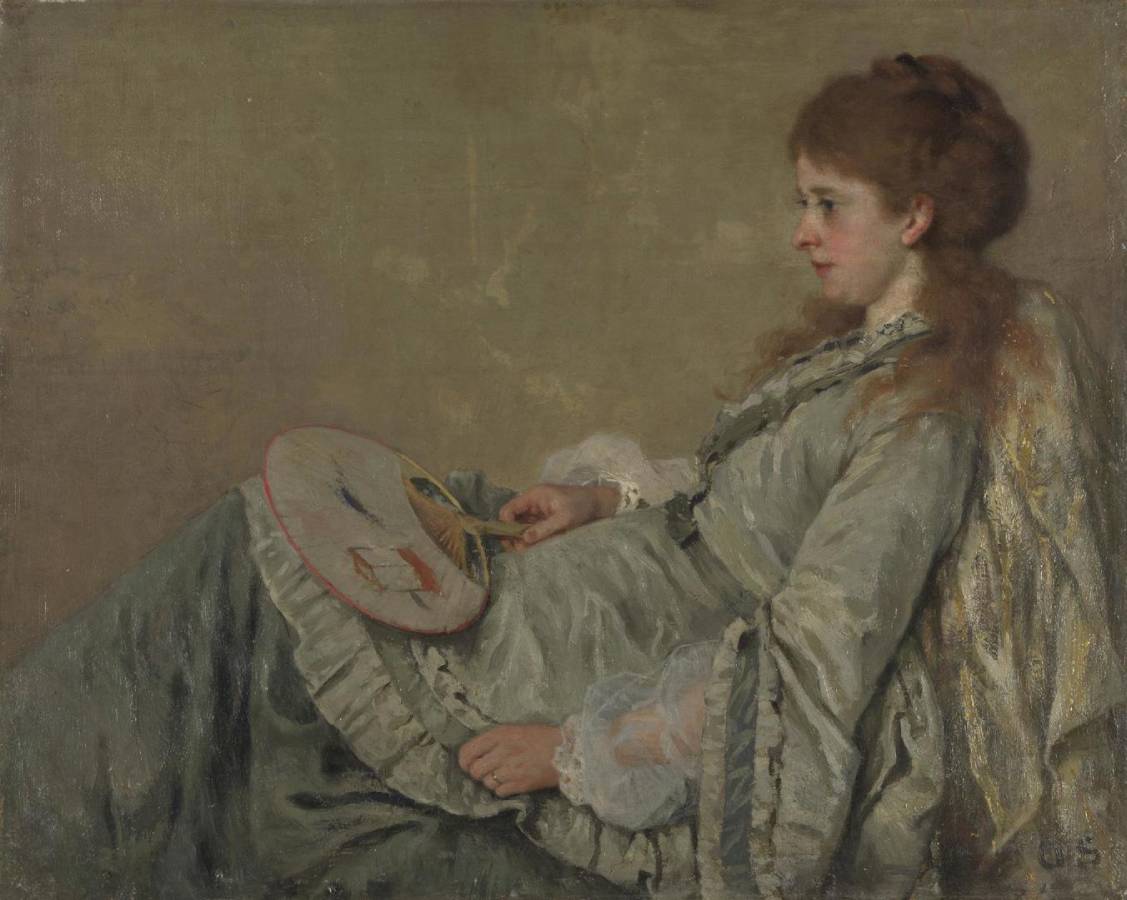Scholderer, Otto (1834-1902)
Portrait of the Artist’s Wife (Porträt der Frau des Künstlers)
probably 1872–1873
Oil on canvas, 31.6 × 40 cm
National Gallery, London
Scholderer made several portraits of Luise Steurwaldt, whom he married in London on 11 February 1872. Here he has portrayed her almost in profile, leaning back against a shawl draped over her chair. She holds a Japanese fan on her lap but looks straight ahead of her as though lost in thought and unaware of our presence. The palette is almost monochrome, consisting of greys and creams with a hint of golden beige in the shawl and the background which is echoed in Luise’s auburn hair. The red edge of the fan and the red of the pavilion design shown on it, pick up the red of Luise’s lips and the blush on her cheeks.
The portrait, probably made in 1872–3, is skillfully painted with great economy: the rapid opaque brushstrokes suggesting the folds of fabric are barely blended, and the translucent sleeves of Luise’s blouse over her bare arms beautifully observed. In style the portrait is influenced by the pared-back portraits of Henri Fantin-Latour, such as Mr and Mrs Edwin Edwards of 1875, on loan to the National Gallery from Tate.
The pose and restrained palette are also reminiscent of Whistler’s famous profile portrait of his mother, which was painted in London in 1871 and exhibited at the Royal Academy in 1872 as Arrangement in Grey and Black: Portrait of the Artist’s Mother (Louvre Abu Dhabi). It is possible that Scholderer knew Whistler’s portrait as he was living and working in London from 1871 to 1899.
This work is closely related to Scholderer’s larger and much more highly finished painting (Städelsches Kunstinstitut, Frankfurt) in which Luise wears the same costume but holds a European fan, rather than the Japanese one shown here. The Frankfurt painting, for which this may be a study, is dated 1873 and was exhibited at the Royal Academy in 1875. In it Luise reclines against her silvery striped shawl but turns to face the viewer, directly meeting our gaze. The black fan – the darkest element of the painting among the palette of silvery greys – draws our gaze as a second focal point: her dark eyes. Whereas in our painting Luise seems distant and dreamy, in the Frankfurt painting she appears alert and as though about to speak, creating quite a different mood.
This painting was bequeathed to the National Gallery, along with Lilacs by Dr J.V. Scholderer, the son of the artist. (NG)
Compare:
 Scholderer, Otto (1834-1902)
Scholderer, Otto (1834-1902)
The Artist’s Wife on the Ottoman
1873
Städel Museum, Frankfurt
See also:
• Steurwaldt, Luise (1837-1919)
